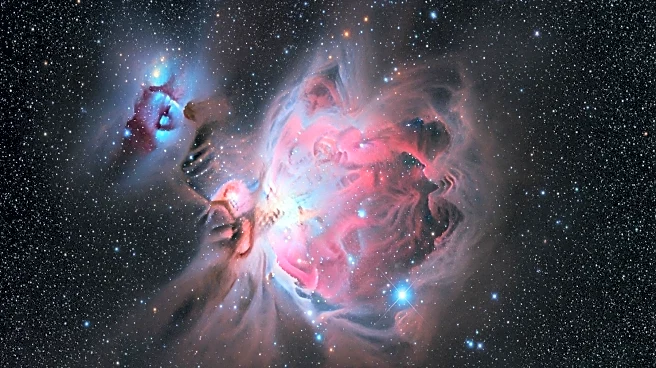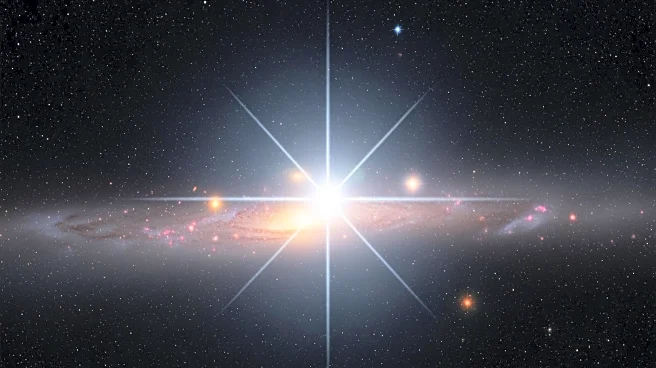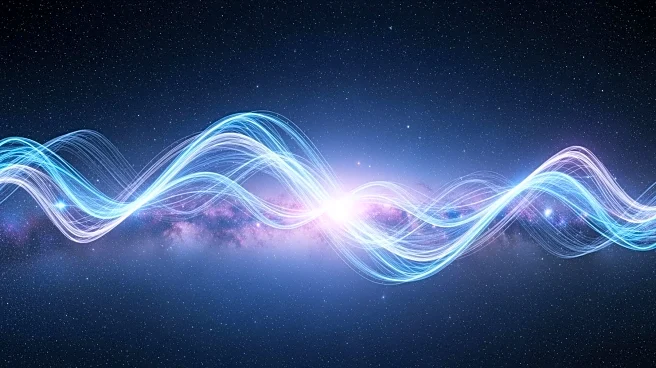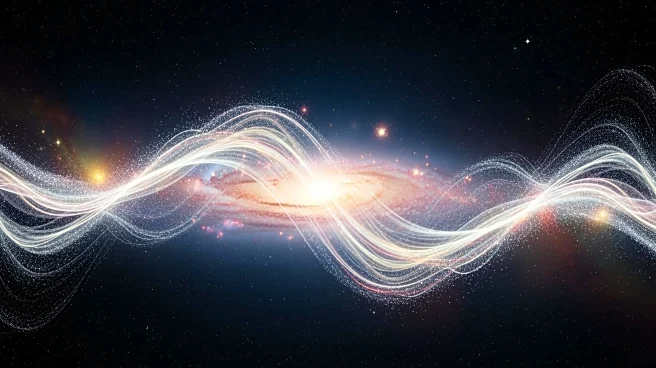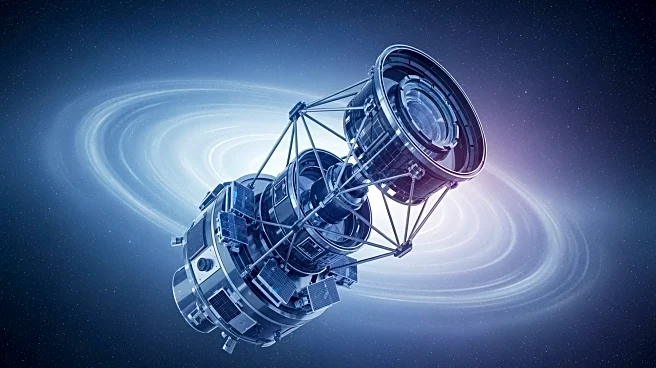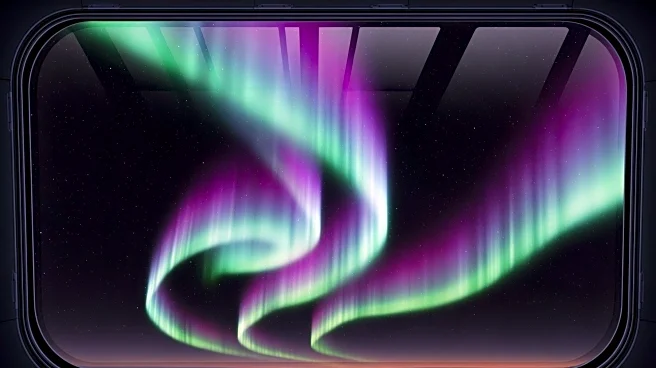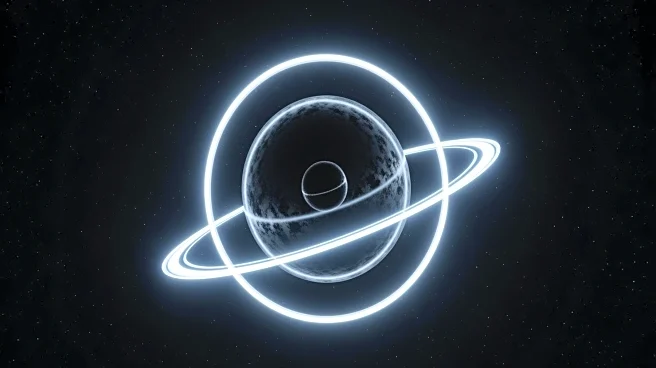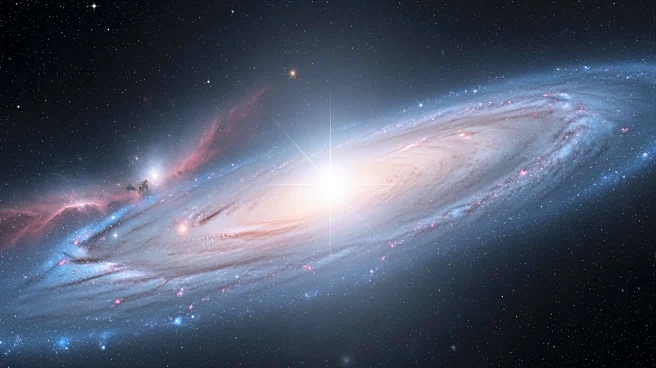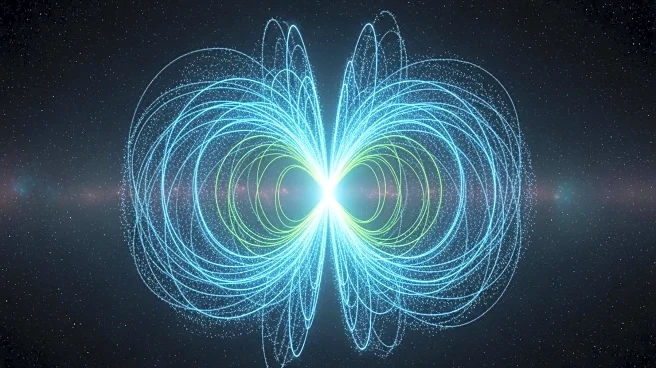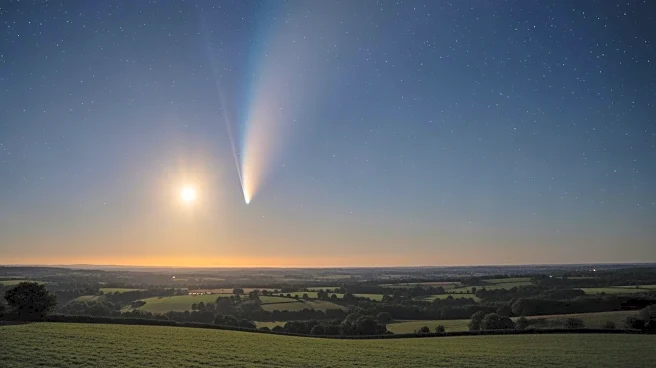What's Happening?
Astrophotographer Ronald Brecher has captured a breathtaking image of the Heart Nebula (IC 1805), located approximately 6,000 light-years from Earth in the Perseus spiral arm of the Milky Way. This nebula,
named for its resemblance to a cartoonish human heart, is a massive star-forming region. The center hosts a population of energetic young stars that sculpt dense pillars of dust with their radiation. The Heart Nebula is situated near the bright star Segin in the constellation Cassiopeia, visible high above the northern horizon around midnight in October. Brecher's image, taken from his home in Guelph, Canada, was collected over 40 hours using an astronomy camera mounted on a Sky-Watcher Esprit 70 EDX refractor telescope. The image was enhanced with astrophotography filters to capture specific wavelengths of light, resulting in a vivid depiction of deep space.
Why It's Important?
The image of the Heart Nebula not only showcases the beauty of the cosmos but also highlights the ongoing processes of star formation and cosmic evolution. Such images contribute to the understanding of stellar life cycles and the dynamics within nebulae. For astrophotographers and astronomers, capturing these distant celestial objects provides valuable data that can aid in the study of the universe's structure and composition. The public sharing of these images can inspire interest in astronomy and science, encouraging educational pursuits and appreciation for the vastness of space.
What's Next?
Astrophotographers and stargazers may be inspired to capture their own images of the night sky, utilizing the best telescopes and astrophotography equipment available. As technology advances, more detailed and vivid images of space can be expected, further enhancing the understanding of cosmic phenomena. Additionally, the continued study of nebulae like IC 1805 may lead to new discoveries about star formation and the lifecycle of celestial bodies.
Beyond the Headlines
The Heart Nebula's image serves as a reminder of the intricate and often unseen processes occurring in the universe. It underscores the importance of scientific exploration and the role of technology in uncovering the mysteries of space. The cultural impact of such images can foster a sense of wonder and curiosity about the universe, potentially influencing future generations to pursue careers in science and technology.
